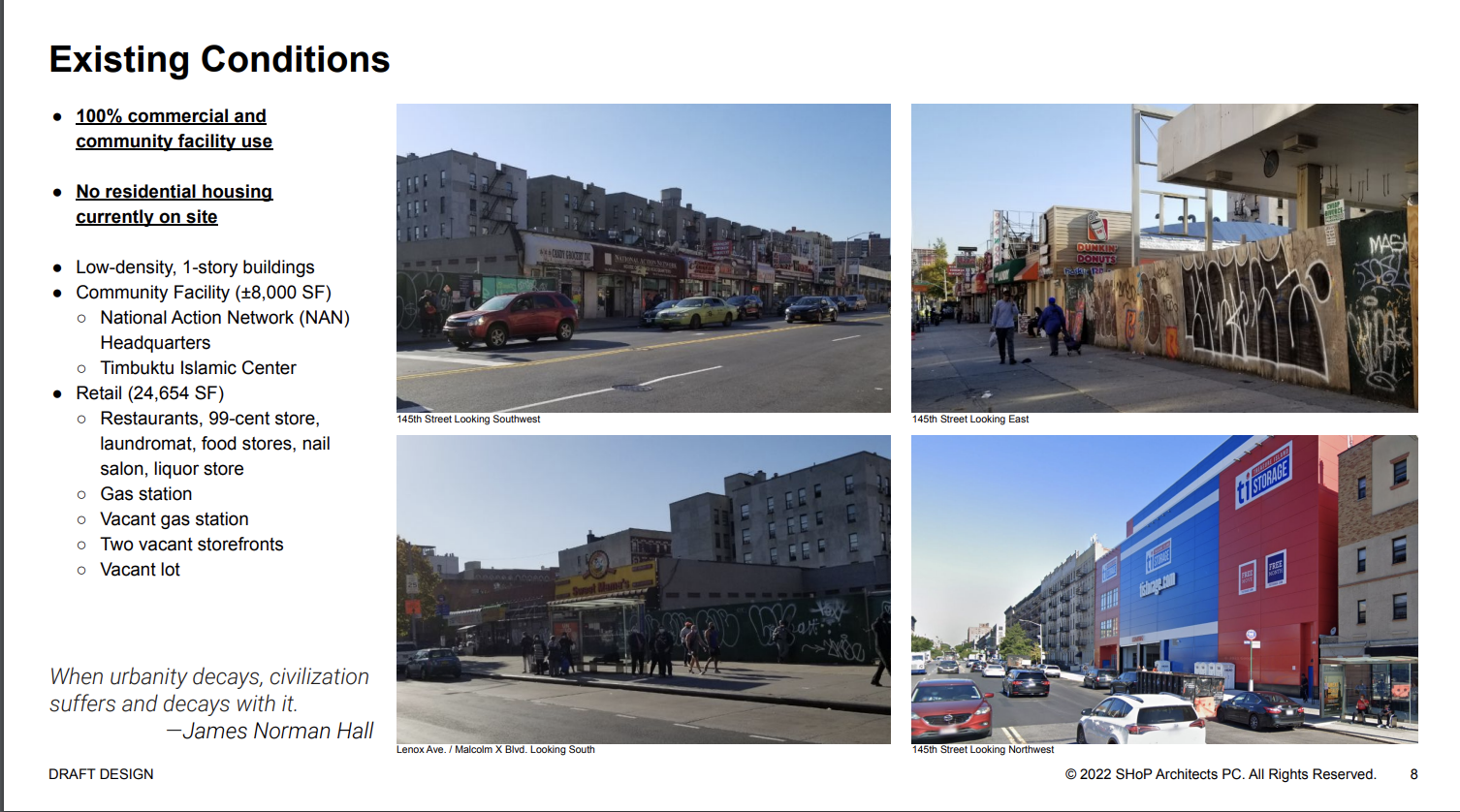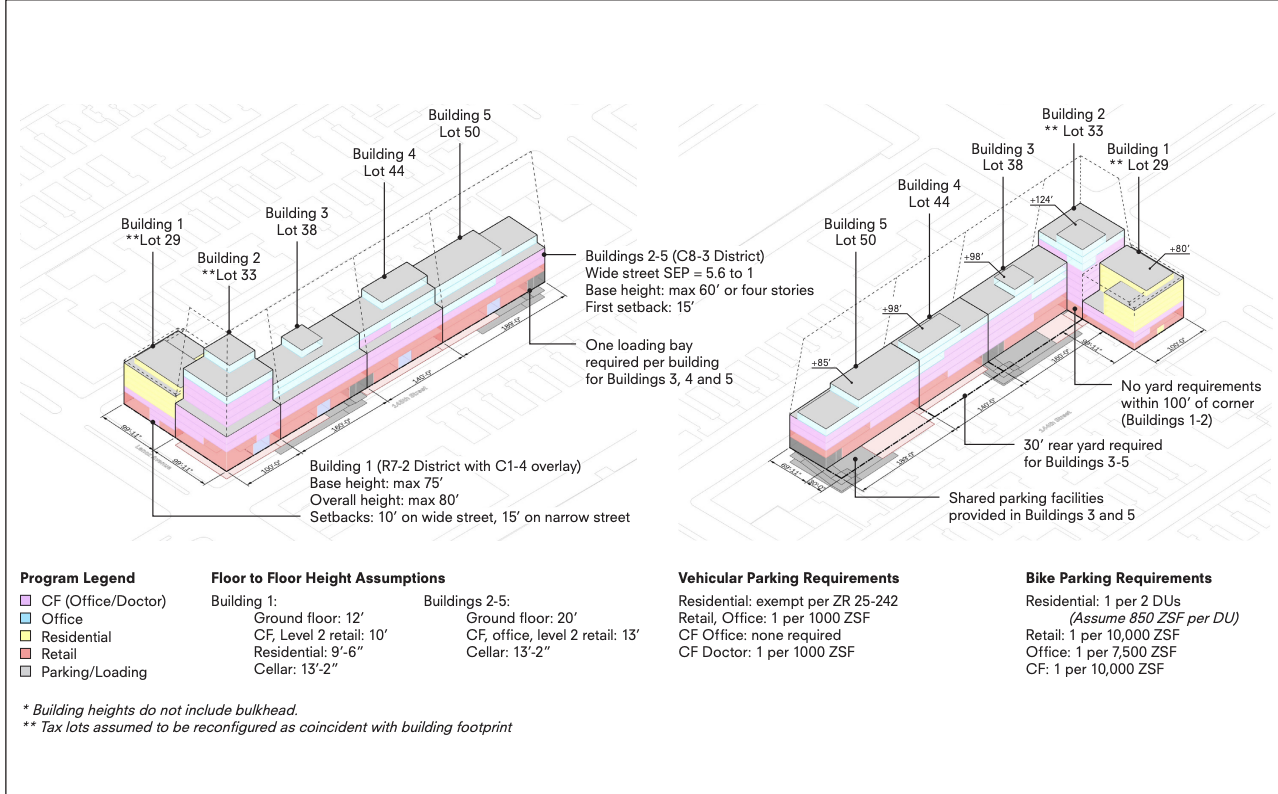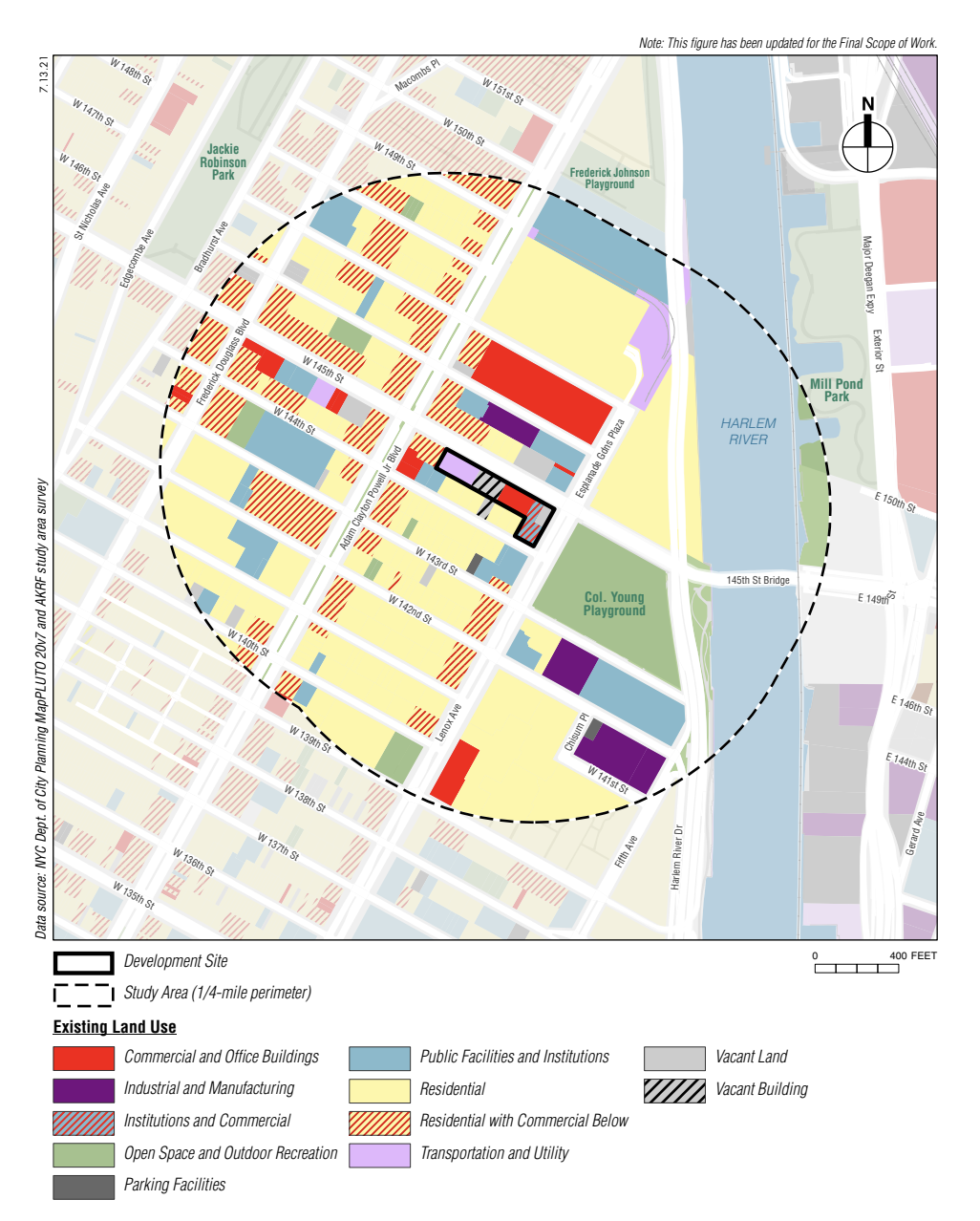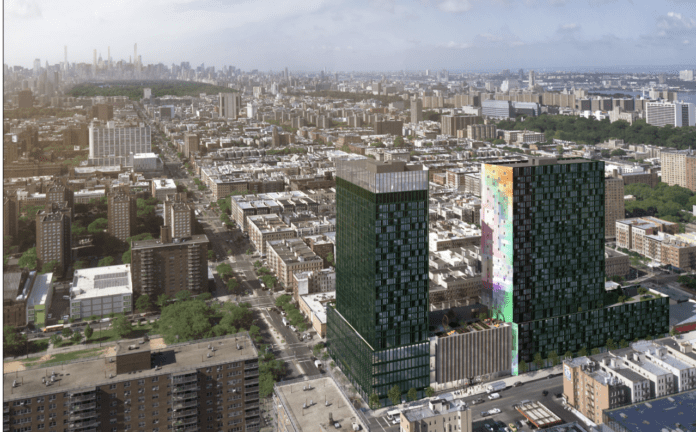Update: The One45 development has stopped development on May 31st, 2022 with no plans to bring it back.
One45, a proposed high-rise project in West Harlem, promised to cure many of the neighborhood’s issues but couldn’t convince the most important players – the community itself.
The project was fearlessly built on the premise of climate justice, creating green jobs, enhancing social consciousness, and prioritizing equity, as stated on the website’s about page. But the ambitious idea to create the country’s first residential green energy district, set to the tune of the new green economy movement, would slowly begin to crumble under scrutiny by those who believed it was too much, too soon.

More on One45
The proposed One45 build consisted of two high-rise mixed-use buildings at over 350 feet tall, set to be built on the corner of Lenox Avenue and West 145th Street, effectively replacing vacant stores and lots. Of the roughly 939 rental units proposed, about 282 would be affordable units. The entire building would cover nearly 700,000 square feet, including but not limited to the residential portions, parking for 150 vehicles, banquet rooms, and community spaces. More rendered photos of the proposed site can be found here.
At a glance, key features of the project included:
- between 200 and 300 affordable housing units
- an aim to make Harlem green, improving the health of citizens
- 1,150 jobs created during the construction process and permanent positions
- youth mentorships in architecture, design, engineering, finance, marketing, led by consultants and businesses involved in One45’s creation.
- small business focus with 45,000 square feet of retail space
- community spaces for gathering, free for public use, and community groups
- space for the civil rights group, The National Action Network’s new headquarters
- a 48,000 square foot Museum of Civil Rights space focused on gender, tech, and social justice
- community revitalization

As the One45 website says, “Building back better is not just the Federal Government’s job. State and local officials in partnership with the private sector must be part of the solution. NYC can lead the way and show others how it is done.”
Where The Plan For One45 Went Wrong
Community members have raised their concerns about the project for nearly as long as it has been introduced. However, things recently came to a head. During a community board meeting with One45 developers, many Harlem residents expressed their discontent with the proposal during a three-hour back and forth session. During this meeting, board members unanimously voted against the project.
There was also a protest days before the meeting where over 50 community members showed up to actively make their voices heard. The problems with the development are varied but all rooted in what is best for the neighborhood. One of which was the affordable housing units. Community members urged developers to reduce the income levels from $50,000, so those that needed affordable housing most could access the units. While the income threshold was based on the area’s median income, community members still believed that the number ostracized those most in need.

Another major area of concern was that such a monumental development would inevitably increase congestion to the point of being unbearable. While it’s certainly commendable to want to include as many good things as possible in one place, it would make an already dense area a nightmare. And thirdly, perhaps most alarming is the idea of further gentrification in Harlem, displaying native residents, specifically, minorities.
It’s important to know that the One45 developers already own the land site where the proposed towers are set to be built at Lenox Avenue and 145th street. This land was purchased years ago. Their initial plans for the site included building 40,000 square feet of market-rate condos, but somewhere along the way, they crafted the One45 project in hopes of having a greater impact on the community. Because the site is already owned by these developers, they are eligible to do as they please, so long as it is approved by city officials.
What’s Next For One45?
Despite community members vehemently opposing the proposed plan, they do not have the final say in whether it will continue. One45 developers are still committed to the idea of the community and making it work. At this point, they are still hopeful that the development in some form or another can be complete in 2026. Teitelbaum is willing to do what it takes to get this project through the door.
One45 will be reviewed by the Manhattan Borough’s president and then will be voted on by the city council later this year. There is a blatant disconnect between what residents say they want and what One45 leaders say the community needs, and it’s causing a major rift between the two parties. As the project continues to make its way through the approval processes, if it does, we can expect there to be more community uproar.
Kylee was born and raised just outside of Sacramento in a small town full of history and charm. She stays up-to-date on the real estate market and hopes to empower hopeful buyers and sellers to make the best decisions for themselves. Kylee is particularly interested in bridging the gap for younger generations, helping them understand the power of owning and investing in real estate.



